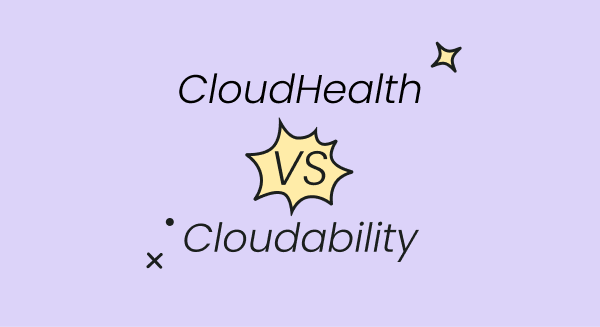
As the adoption of Large Language Models (LLMs) increases, Finout anticipates a significant expansion in the infrastructure for LLM monitoring and optimization tools. Techniques such as a mixture of experts and LLM quantization, along with architectural decisions like smart LLM routing and caching, can differentiate between a profitable and a loss-making LLM deployment.
To avoid being hit with a classic case of “bill shock”, we’ve created this FinOps guide for generative AI.
This is one of our most popular articles. Don’t miss another highly viewed piece on What is Datadog—read it here.
Optimizing Cloud Costs with FinOps AI
Implementing FinOps AI practices is not a task for a single department but a collaborative effort between IT, finance, and AI development teams. This unified approach is crucial for achieving ongoing cost-effectiveness and optimization, especially when incorporating AI into your cloud cost management strategies.
To effectively implement these FinOps AI practices, organizations must focus on several key areas to ensure that their cloud resources are used efficiently and cost-effectively. These areas include:
- Resource Provisioning and Sizing: The introduction of AI tasks alters the approach to resource allocation and sizing, often necessitating the use of graphics processing units and other specialized processing units. Making adjustments to accommodate these needs is essential.
- Choosing the Right Instance Types: The specific needs of your AI projects guide the optimization of resource allocation by selecting suitable instance types. Utilizing spot instances can offer cost savings for non-essential AI tasks, allowing for scheduling AI training operations during times of low demand or off-peak hours.
- Scalability: Given the fluctuating nature of AI workloads, implementing auto-scaling enables the dynamic modification of resource quantities in response to the demands of the workload, preventing unnecessary resource allocation during periods of low activity.
- Monitoring Adjustments: Tailoring the monitoring of your AI infrastructure and usage is necessary, involving the introduction of new metrics from your cloud monitoring tools to better understand cost trends, patterns in resource usage, and opportunities for further cost reduction. Incorporating cost allocation tags helps in attributing expenses to specific AI initiatives or teams within your existing tagging framework.
- Data Storage Considerations: AI models typically produce substantial data volumes, potentially leading to significant increases in storage costs, particularly for organizations embarking on their first significant AI project. Continuously evaluating storage solutions based on usage patterns before and after deploying an AI project is advisable.
- Optimizing Data Transfers: Managing data transfers in AI tasks might require moving data across different cloud services or regions. Leveraging content delivery networks with your current cloud service provider (CSP) can enhance cost efficiency. In a multi-cloud setup, employing automation is key to maximizing data transfer efficiency across cloud platforms.
LLMs Pricing Models
The pricing structures for Large Language Models (LLMs) are primarily divided into two models:
- Pay-per-Token Model: In this model, companies incur costs based on the volume of data processed by the LLM. The pricing is calculated according to the number of tokens, which could be words or symbols, involved in both inputs and outputs. This method is exemplified by how certain leading organizations, like OpenAI, quantify token usage.
- Self-Hosting Model: Alternatively, companies may choose to deploy LLMs on their own infrastructure. This approach requires investment in computing resources, particularly GPUs, to facilitate the operation of these models.
The pay-per-token approach is valued for its simplicity and ability to scale, whereas self-hosting grants enhanced data privacy and greater operational autonomy. Nonetheless, self-hosting demands substantial investment in infrastructure and its upkeep. Examining both avenues:
In self-hosting, the primary expense is hardware. For example, deploying an open-source model such as Falcon 180B on a platform like AWS would typically involve using an instance type like ml.p4de.24xlarge, which may cost around $33 per hour for on-demand usage. This translates to a minimum monthly expense of approximately $23,000, excluding potential scaling adjustments and discounts.
For single Falcon Model Deployment, scalable solutions and optimization efforts are necessary to manage costs effectively despite the high baseline expenses associated with such infrastructure.
On the other hand, the SaaS (Software as a Service) model operates on a pay-per-token basis, where the cost is determined by the number of tokens used in API requests, with different pricing for input tokens, output tokens, and tokens associated with larger model sizes.
Providers like OpenAI and Anthropic employ unique methods for calculating token counts and set their prices accordingly. Special characters can lead to higher token counts, increasing costs, whereas standard English words typically require fewer tokens. Users should be mindful of potential cost variations when processing languages other than English, such as Hebrew, which may result in higher expenses due to their tokenization characteristics.
Tips for Optimizing LLM Deployment On The Cloud
In this section, we'll explore key strategies for cost-effective LLM deployment on the cloud.
- Adopting Learner Models for Efficiency: Embracing simpler, less computationally demanding models forms the core of FinOps AI. By selecting or developing models like the Orca 2 LLM from Microsoft, which provides superior performance without the computational heft of its larger counterparts, organizations can significantly cut down on operational expenses. The ongoing development of compact models monitored through leaderboards, is pivotal for sustainable AI deployment, particularly for resource-constrained entities.
- Leveraging Open Source LLMs: The FinOps AI approach benefits greatly from the utilization of open-source LLMs. This not only circumvents the high costs associated with proprietary models but also taps into the collective progress made by the global open-source community, offering a plethora of pre-trained models at no extra cost. This strategy is instrumental in democratizing access to state-of-the-art AI technologies.
- Enhancing Models with Fine-Tuning: Customizing pre-trained LLMs with specific datasets allows for tailored performance enhancements without the need to develop a new model from scratch. This FinOps AI tactic minimizes both time and computational resources, leveraging fine-tuning to enhance the efficacy of more compact, cost-effective models.
- Incorporating Retrieval-Augmented Generation (RAG): Addressing the high operational demands of LLMs, RAG introduces a cost-efficient method by integrating retrieval mechanisms with existing knowledge bases. This enhances output quality and reduces computational needs, making it a key strategy in the FinOps AI toolkit for sustainable and efficient AI solution deployment.
- Optimizing with LLM Memory Management: Technologies like memGPT represent a stride towards minimizing the operational impact of LLMs. By optimizing memory usage and context processing, they present a financially savvy solution under the FinOps AI umbrella, reducing computational overhead while ensuring comprehensive context understanding.
- Integrating Custom Ontologies and Semantic Layers: Embedding domain-specific knowledge directly into LLMs streamlines the generation of precise, contextually relevant responses. This method aligns with FinOps AI principles by enhancing model accuracy without extensive computational efforts on novel data.
Conclusion
By adopting these FinOps AI-centered strategies, organizations can deploy LLMs effectively, achieving a harmonious balance between cost efficiency and performance. This not only broadens the accessibility of cutting-edge AI technologies across various sectors but also underscores the importance of financial operations optimization in the AI deployment process.








